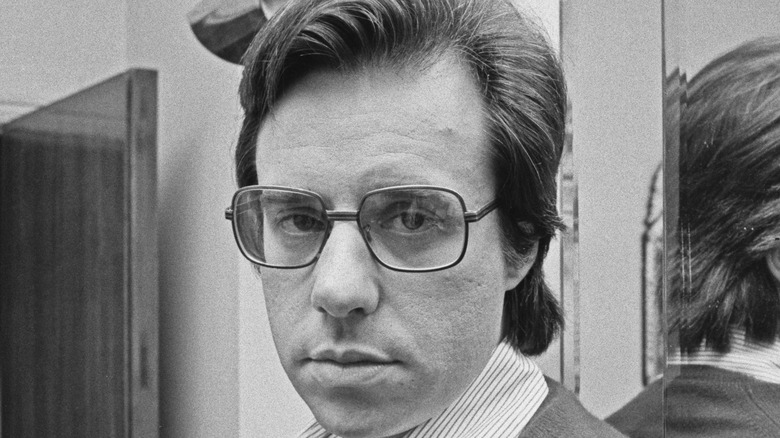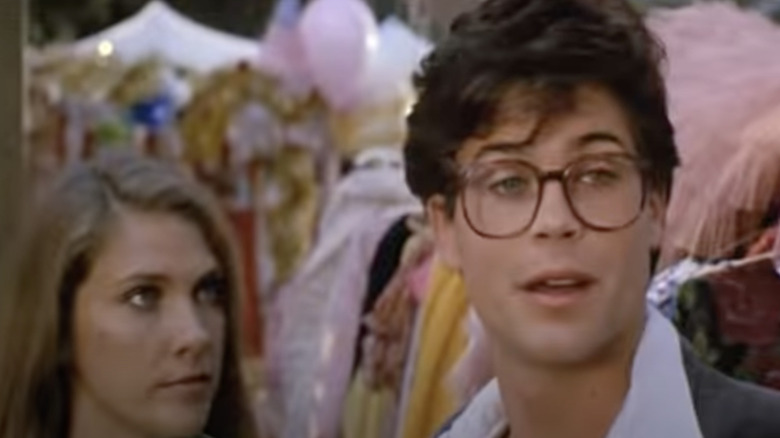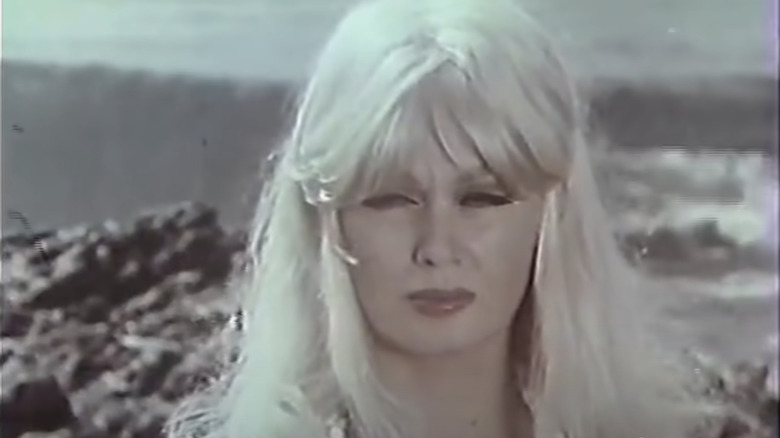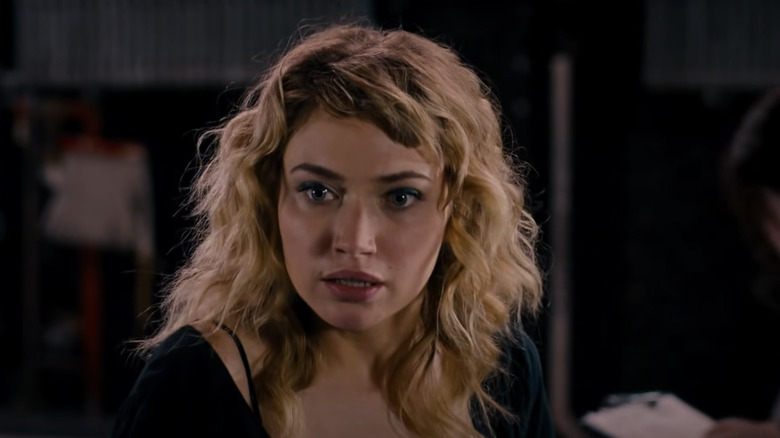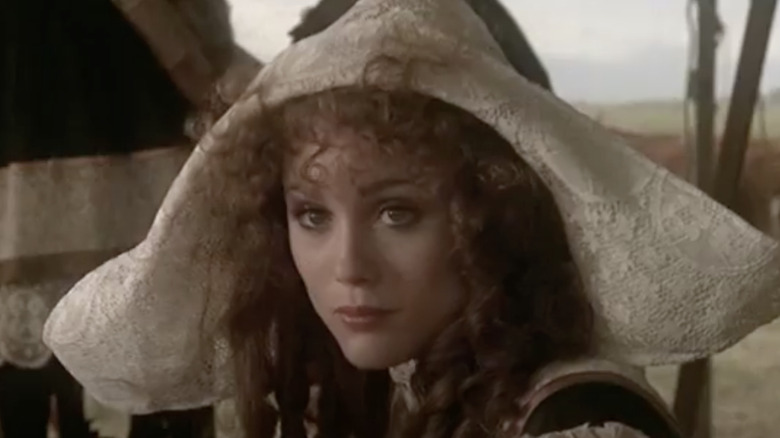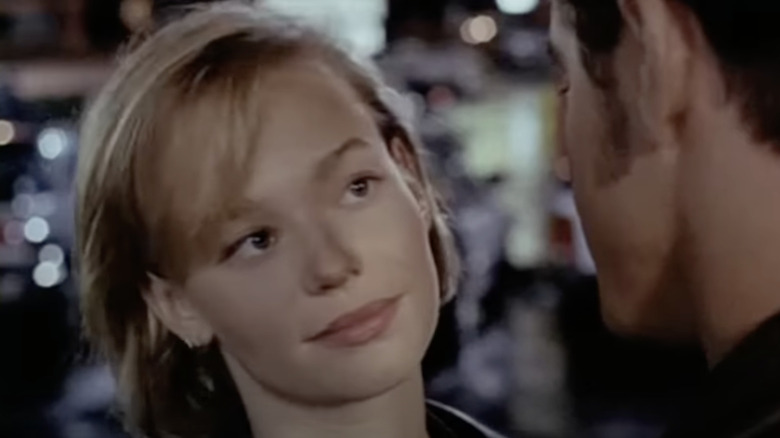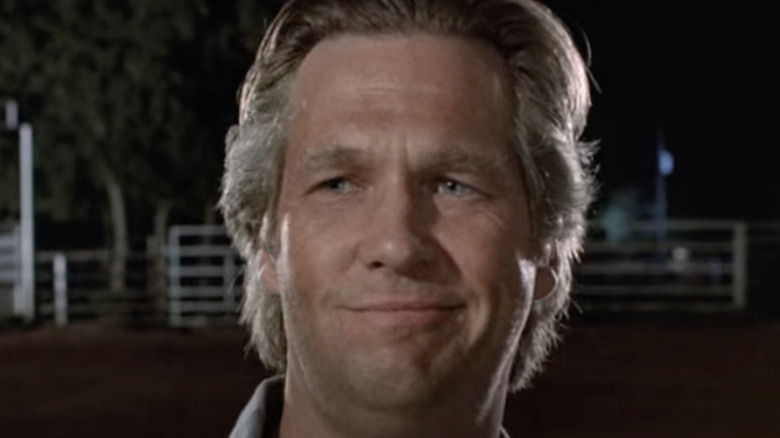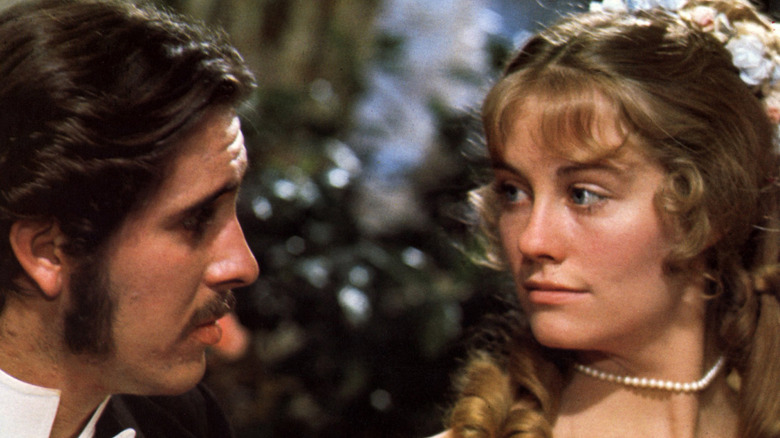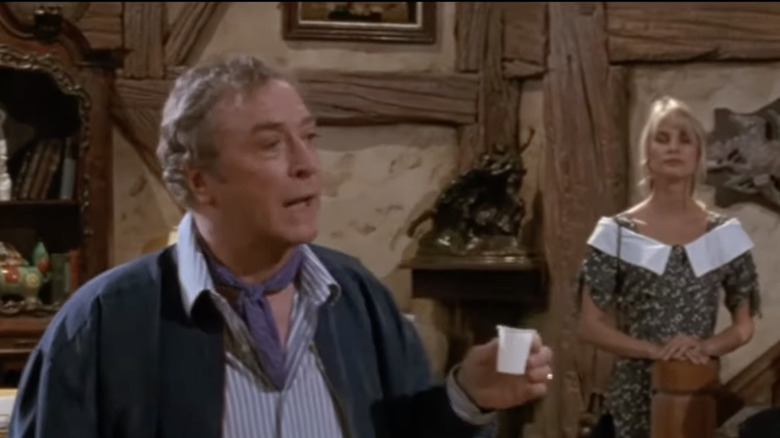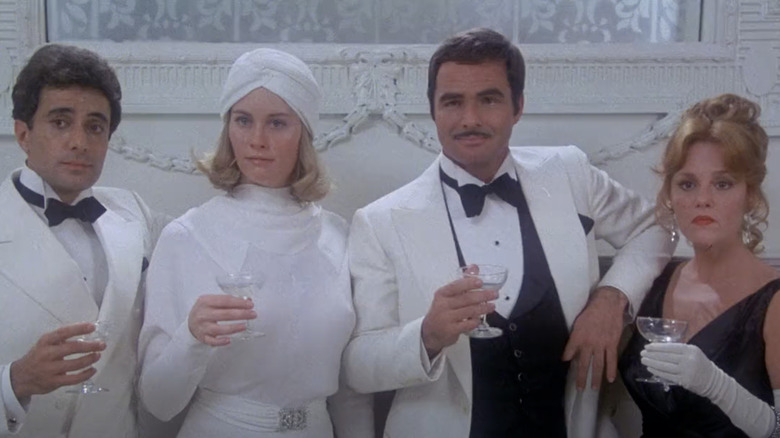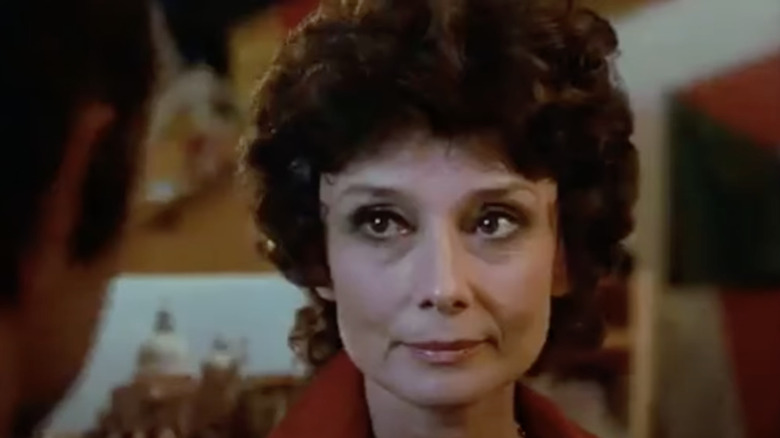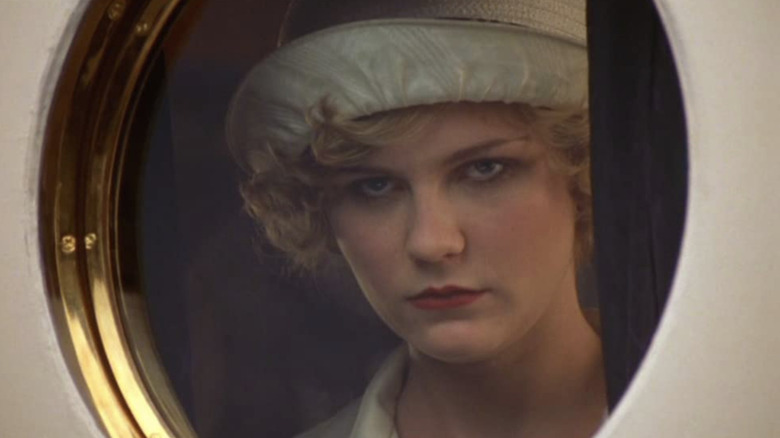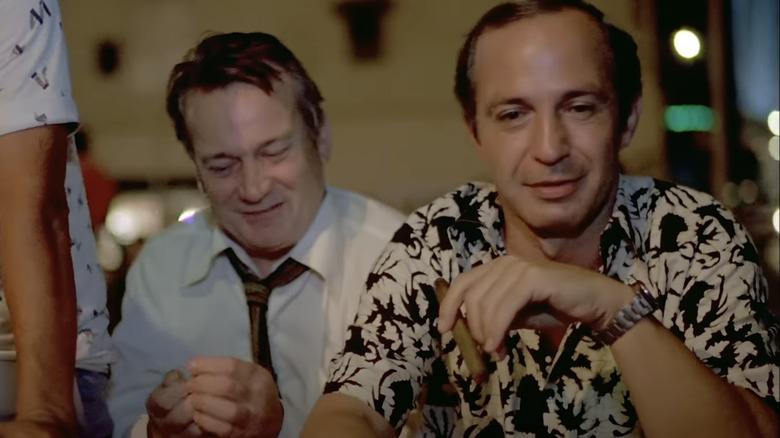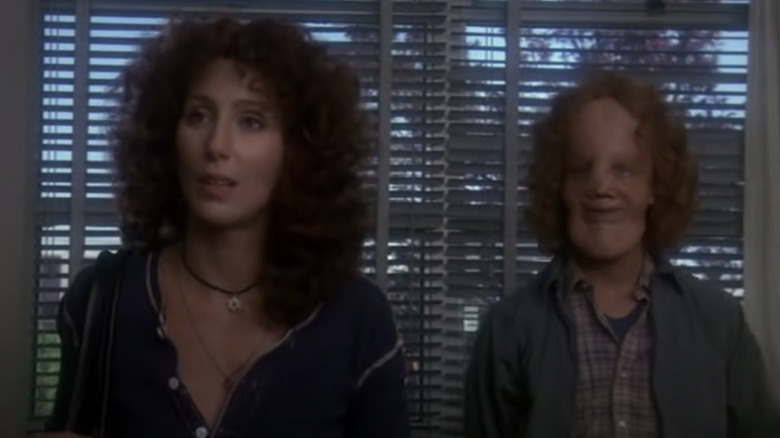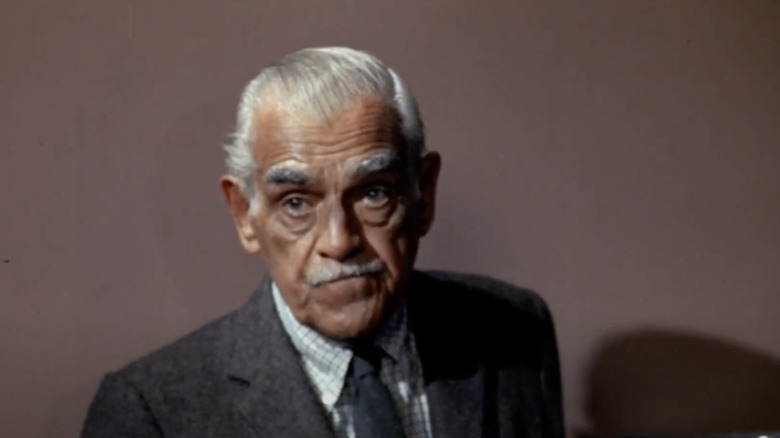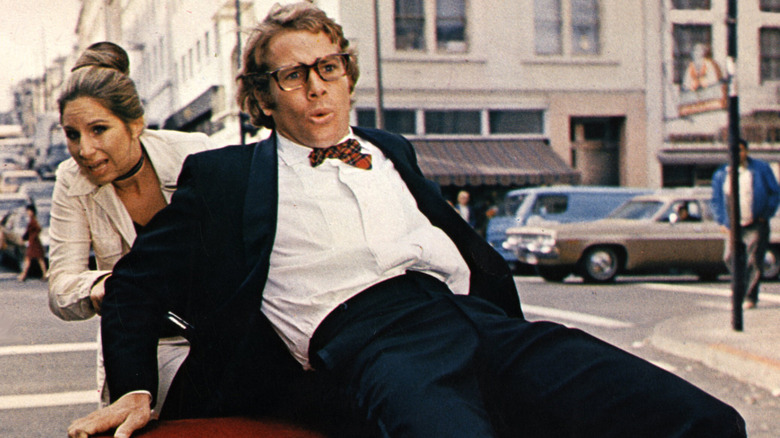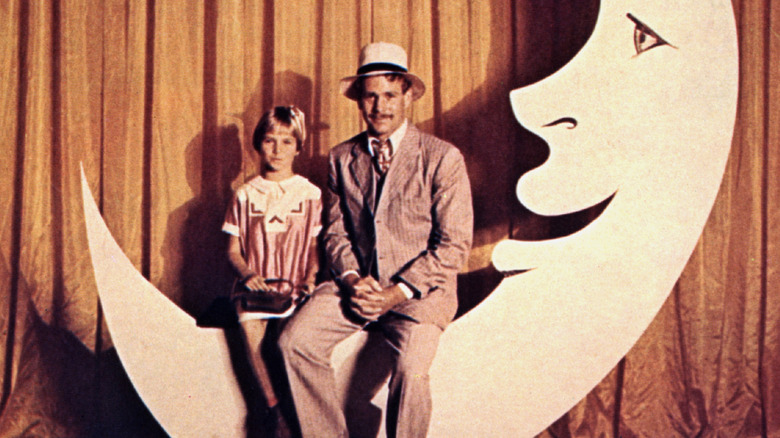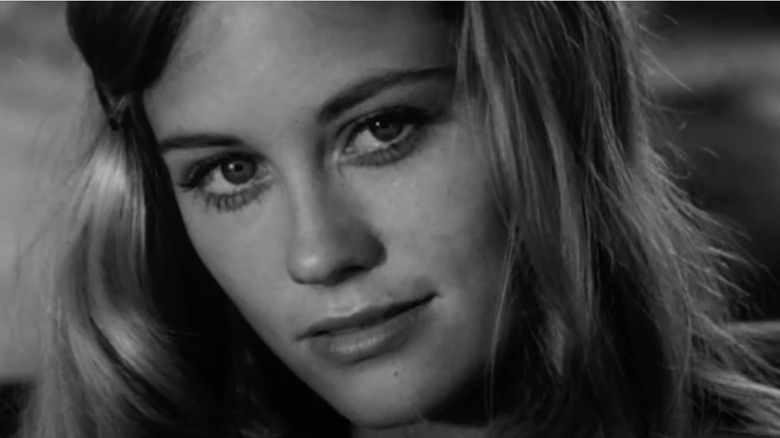Peter Bogdanovich's Films Ranked From Worst To Best
Filmmaker Peter Bogdanovich died on January 6, 2022 at the age of 82. A writer, director, actor, producer, scholar, and raconteur, Bogdanovich dedicated his life to cinema. With his trademark thick-rimmed glasses and ascot, he had the air of a college professor — a reputation he more than earned with his encyclopedic knowledge of film history. In many ways he was the connective tissue between his New Hollywood peers, such as Francis Ford Coppola and William Friedkin, and his Old Hollywood heroes: Alfred Hitchcock, John Ford, and especially Orson Welles, with whom Bogdanovich had a long, fraught friendship.
Born in Kingston, New York in 1939, Bogdanovich studied theatre and wrote film reviews before setting out for Hollywood with his wife, production designer Polly Platt, in 1962. In the early '70s he became one of American cinema's leading lights with a hot streak of commercially and critically successful films. As the decade wore on, however, his personal life began to draw more attention than his work, and though he continued to make films for the rest of his days, he never again hit the heights of those early years.
Later in life, Bogdanovich became arguably more well known as an actor (appearing on several episodes of "The Sopranos" as Dr. Melfi's psychiatrist) and as an elder statesman of cinema. His work on behalf of film preservation won him accolades, and in 2018 he oversaw the completion of Orson Welles' unfinished final film "The Other Side of the Wind," decades after production was abandoned.
Bogdanovich leaves behind a lasting influence on the world of film, and a body of work that stretches across five decades, full of instant classics, instant bombs, and everything in between. Here are his narrative feature films (no documentaries or television productions), ranked from worst to best.
17. Illegally Yours (1988)
It's Rob Lowe versus the criminal justice system in the 1988 would-be screwball comedy "Illegally Yours." Florida college dropout Richard (Lowe) is selected for jury duty, only to discover that the defendant on trial for murder is his childhood crush Molly (Colleen Camp). Naturally, Richard sets out to prove Molly's innocence while dodging the real killers and getting caught up in a blackmail scheme.
At this point in his career, Bogdanovich had fallen on hard times. The failure of this movie didn't help — it currently rates a robust 0% on RottenTomatoes.
Audiences and critics were not kind to the film; it received some of the worst reviews of Bogdanovich's career and bombed at the box office. Years later, Bogdanovich would blame the film's failure on extensive re-edits performed by producer Dino De Laurentiis, though one wonders if any editing magic could have salvaged the strained humor and nonexistent chemistry between Camp and a horribly miscast Lowe.
16. Voyage to the Planet of Prehistoric Women (1968)
This 1968 curio began life as the 1962 Russian sci-fi film "Planeta Bur" (AKA "Planet of Storms"). Legendary no-budget producer Roger Corman purchased the film and re-cut it for American audiences, first as 1965's "Voyage to the Prehistoric Planet," and then again as "Voyage to the Planet of Prehistoric Women." In exchange for the funding to make his debut feature "Targets," Bogdanovich was tasked with writing new English dialogue for the film, as well as directing new scenes for '50s pin-up queen Mamie Van Doren as the leader of the titular prehistoric women. They didn't have the budget to shoot film and record sound at the same time, so Bogdanovich came up with the idea that the women communicate telepathically.
The credited writer and director on "Voyage" are Henry Ney and Derek Thomas, both pseudonyms for Bogdanovich — not because he was ashamed of the film necessarily, but because he felt he had contributed so little to it. As he told the AV Club in 2013, "People think I directed it, when I only directed about ten minutes of it."
15. She's Funny That Way (2014)
Inspired by the experience of casting real life sex workers for his 1979 film "Saint Jack," Bogdanovich and then-wife Louise Stratten (sister of Dorothy) wrote the script to "She's Funny That Way," originally titled "Squirrels to the Nuts," around the year 2000 as a potential vehicle for John Ritter and Cybill Shepherd. After Ritter's death in 2003, Bogdanovich shelved the script for many years, only reviving the project after becoming friends with star Owen Wilson. The film was eventually released in 2014; it would be Bogdanovich's last feature film.
Wilson plays Arnold, a successful Broadway director with a habit of soliciting sex workers and then giving them enough money to quit the life and pursue their real dreams. When one of them, Izzy (Imogen Poots), auditions for one of his plays, the complications spin out of control, involving everyone from Arnold's wife (Kathryn Hahn), the playwright (Will Forte), and the playwright's therapist girlfriend (Jennifer Aniston), who is treating Izzy. The film's reception was mixed; while some critics were glad to see Bogdanovich returning to form with an old-fashioned bedroom farce, others lamented the lack of strong laughs in this (ostensible) comedy.
14. Nickelodeon (1976)
Bogdanovich indulged his love of silent films and behind-the-scenes tales of Old Hollywood in 1976's "Nickelodeon." Ryan O'Neal plays a shady eastern lawyer in 1914 who falls into the fledgling moving picture business. Moviemaking was the literal and figurative Wild West in those days, where films were made by hook or by crook, and often at great personal risk.
Bogdanovich clearly relishes Buster Keaton-esque sequences like O'Neal and crew racing a train in order to get a good shot. This was also during his imperial phase, before the box office failure of "A Lot Like Love"; according to producer Irwin Winkler, Bogdanovich was insufferably egotistical on set, even directing scenes on horseback to emulate his hero John Ford.
Clashes with the studio over the script, casting, and Bogdanovich's wish to shoot the film in black and white made for a tumultuous production. Reviews at the time were largely negative; the film's tone wavers between slapstick and wistful, and Bogdanovich's enthusiasm for the subject matter doesn't translate to the screen. "He must have had a lot of fun making this movie," Roger Ebert wrote, "but we don't have nearly as much fun watching [it]."
13. The Thing Called Love (1993)
The struggles and loves of young songwriters in Nashville is the subject of 1993's "The Thing Called Love." Samantha Mathis plays Miranda, a New Yorker who moves to Music City in the hopes of becoming a songwriter. She falls in with a group of fellow young transplants all trying to make it, played by Dermot Mulroney, Sandra Bullock, and River Phoenix (in his final completed role).
As with "They All Laughed," the death of one of the film's leads cast a pall over the film and affected its theatrical release. After opening well in the south, Paramount Pictures planned a nationwide release, but that all changed with Phoenix's death by overdose. Fearing charges of exploitation, Paramount canceled the wider release and let the film wither away. Perhaps that fear was justified, as Roger Ebert's one-star review was preoccupied with Phoenix's final role being in such a lightweight film.
For some, though, that slightness is part of the film's charm. As with many Bogdanovich films, its reputation has improved over the years, helped along by a director's cut released to DVD in 2006.
12. Texasville (1990)
Decades before "Star Wars: The Force Awakens" and "Creed" made legacy sequels into big business, Bogdanovich returned to the people and places of his breakout hit "The Last Picture Show" for 1990's "Texasville." Original stars Jeff Bridges, Cybill Shepherd, Cloris Leachman, Timothy Bottoms, and Randy Quaid all returned to reprise their roles, with a screenplay by Bogdanovich based on Larry McMurtry's sequel novel.
Set over 30 years after the events of "Picture Show," that film's teen angst and small town ennui have been replaced with mid-life crises and the inevitable passage of time, just as the first film's stark black and white photography is replaced by the garish colors of 1980s Texas. Lovesick teen Duane (Bridges) is now a 50-year-old oil millionaire with a wife (Annie Potts) and son (William McNamara). He has settled into a comfortable routine, but when his high school love Jacy (Shepherd) returns to town after decades away, his world is thrown for a loop.
Originally intended to have the same bittersweet tone as its prequel, "Texasville" fell victim to studio meddling, cutting much of the dramatic content before release. The film fared poorly with critics and audiences as a result; even positive reviews couldn't help but note that it was a far cry from a classic like "Picture Show." In 1993 Bogdanovich released a director's cut on LaserDisc, adding 25 minutes of footage back to the film, but to date it has not been released on DVD or Blu-Ray.
11. Daisy Miller (1974)
"Peter Bogdanovich has made a movie...in color," intones the narrator of the preview for 1974's "Daisy Miller." At this point in his career, that sort of gravitas was, if not justified, then understandable. "The Last Picture Show" and "Paper Moon," were both period films shot in era-appropriate black and white. For his adaptation of the Henry James novel, he presents the Gilded Age setting in color reminiscent of impressionist art of the time.
The story of a flirtatious American (Cybill Shepherd) on holiday in Europe, beguiling men from one end of the continent to the other, was recommended to Bogdanovich by Orson Welles. His producing partners at the time, William Friedkin and Francis Ford Coppola, were more skeptical, feeling that the whole thing was "kind of a vanity project to show Cybill off."
Critical reception was polarized, with some critics thrilled by the melding of Bogdanovich's sensibilities with James', and others incensed by the film's empty spectacle and the miscasting of Shepherd.
10. Noises Off... (1992)
Bogdanovich returned to his theatrical roots with "Noises Off," the 1992 adaptation of Michael Frayn's ever-popular stage farce. British director Lloyd Fellowes (Sir Michael Caine) struggles mightily to keep the out-of-town tryouts of a terrible farce called "Nothing On" afloat, dealing with a cast of boozy, woozy, or otherwise distracted American actors (including Christopher Reeve, Carol Burnett, and John Ritter), a set that keeps breaking, and an affair with his stage manager (Julie Hagerty) that might turn into something more.
The film sticks close to the original play script, perhaps too close; Bogdanovich does little, either on the page or on camera, to make the film more cinematic. It plays too often like a filmed version of the stage production, with the talented and game actors playing to cheap seats that aren't there, but perhaps that was the best course of action for such inherently theatrical material. The film is Bogdanovich in traffic control mode, not unlike Caine's director character, just trying to keep the world from spinning off its axis.
9. At Long Last Love (1975)
Intended as a tribute to the bubbly, sophisticated musicals of the 1930s, "At Long Last Love" fell as flat as old champagne when released in 1975, though its reputation has improved somewhat in the past decade. The story of two socialite couples who switch partners to the songs of Cole Porter, Bogdanovich was inspired by Ernest Lubitsch to film the musical numbers with live singing instead of prerecorded tracks, a decision that caused difficulty with the cast — including Cybill Shepherd and Burt Reynolds, who were neither trained singers nor dancers.
Reviews at the time were brutal, which Bogdanovich later chalked up to public backlash against his relationship with Shepherd as much as any problems with the film itself. "At Long Last Love" was out of circulation for decades until a new two-hour cut was released on Netflix, which led to a Blu-Ray release in 2013. The film has gained a new generation of admirers, including "Knives Out" director Rian Johnson and his wife, film historian/podcaster Karina Longworth.
8. They All Laughed (1981)
A romantic farce disguised as a private eye story, the release of 1981's "They All Laughed" was marred by the murder of one of its stars. Two private detectives are hired to follow two wives suspected of infidelity and end up falling in love with them. Aging lothario Jack (Ben Gazzara), already juggling a country singer and a beautiful cab driver, pursues an Italian businessman's wife (Audrey Hepburn, in her final starring role), while klutzy Charles (John Ritter) becomes smitten with a gorgeous socialite played by Dorothy Stratten.
Stratten and Bogdanovich had fallen in love during production, but two weeks after filming wrapped Stratten was murdered by her estranged husband Paul Snider. Distraught over her death, Bogdanovich purchased the film from 20th Century Fox and distributed it himself. The film's subsequent box office failure forced Bogdanovich to declare bankruptcy.
As with "At Long Last Love," the years have been kinder to "They All Laughed," which has its share of high profile admirers, such as directors Quentin Tarantino and Noah Baumbach. In 2014, the making of the film was chronicled in Bill Peck's loving documentary "One Day Since Yesterday."
7. The Cat's Meow
A far more successful nostalgia exercise than "Nickelodeon," 2001's "The Cat's Meow" speculates on the death of Old Hollywood mogul Thomas Ince aboard publisher William Randolph Hearst's yacht in 1924, dramatizing the longstanding rumor that a jealous Hearst shot Ince by accident, intending to kill Charlie Chaplin instead. This rumor had been of interest to Bogdanovich for decades, ever since Orson Welles told him that the incident was included in an early draft of "Citizen Kane," as the title character was infamously modeled after Hearst.
Working off of Steven Peros' adaptation of his own stage play, the film gathers a cast of famous faces playing other famous faces, notably comedian Eddie Izzard as Chaplin, Edward Hermann as Hearst, and Kirsten Dunst as Marion Davies, Hearst's mistress whose brief affair with Chaplin sets the plot in motion. A stray bowler hat seals the fate of Ince, played by Cary Elwes, as Hearst pulls the trigger on the wrong man.
Co-starring Jennifer Tilly as longtime Hearst gossip maven Louella Parsons, "The Cat's Meow" marked something of a career comeback, earning Bogdanovich some of his best reviews in years, particularly for its strong ensemble and Hollywood insider flourishes.
6. Saint Jack (1979)
Arguably Bogdanovich's most underrated film, it may have also been his most desperate. Following the disappointing performance of "Nickelodeon," Bogdanovich took three years off from the movie business, traveling the world with Cybill Shepherd. Years earlier, Shepherd had won the film rights to Paul Theroux's novel "Saint Jack" after suing Playboy magazine over leaked nude photos from "The Last Picture Show."
Shepherd and Bogdanovich originally intended Orson Welles to direct and star in the adaptation, with Playboy and Paramount Pictures co-producing. Welles dropped out, effectively ending his friendship with Bogdanovich, and when Paramount rejected his plan to cast Ben Gazzara in the lead, Bogdanovich took the project to Roger Corman's New World Pictures.
The story of an American pimp living and working in Singapore, "Saint Jack" was already notorious in Singapore for featuring the country in such a debauched light. Bogdanovich and his crew pretended to be working on a different movie in order to fool authorities. They interviewed and cast real-life sex workers, working their experiences into the script and often filming in actual brothels. Through it all, Gazzara holds the film together, giving even the most sordid moments an air of wounded dignity.
While there were some naysayers, like the New York Times' Vincent Canby, most critics regarded "Saint Jack" as a return to form for Bogdanovich after several high-profile bombs.
5. Mask (1985)
"Mask," the 1985 inspirational crowd-pleaser based on the real life of teen Rocky Dennis, was a job for hire for Bogdanovich, who was still reeling financially from self-distributing "They All Laughed." But it became one of the biggest hits of his career, second only to "What's Up, Doc?" in box office, and even inspired a stage musical.
Dennis, played by Eric Stoltz, was born with craniodiaphyseal dysplasia, a rare condition in which calcium deposits on the skull cause the face bones to expand and distort. The film achieved this effect through the use of heavy prosthetics, for which makeup designers Michael Westmore and Zoltan Elek won an Academy Award. Stoltz gives a fine performance under all that makeup, but the film really belongs to Cher as Rocky's protective mother Rusty; it is ultimately her story as much as his.
As usual, Bogdanovich battled with the studio over the final release, which saw eight minutes get cut from the film without his consent and the planned soundtrack of Bruce Springsteen songs replaced with Bob Seger. Bogdanovich sued, claiming his contractual right to final cut had been violated. The film's 2004 DVD was released with the eight minutes and Springsteen songs restored.
4. Targets (1968)
The bifurcated structure of Bogdanovich's 1968 official debut feature "Targets" (sorry, "Prehistoric Women") was born out of necessity. Producer Roger Corman had horror legend Boris Karloff under contract for two days. The plan was to shoot 20 minutes of new Karloff footage in those two days, reuse 20 minutes of footage from his 1963 film "The Terror," and shoot 40 minutes of other actors to make a "brand new" 80-minute Boris Karloff movie.
The film that resulted, co-written by Bogdanovich and then-wife Polly Platt with an uncredited assist from director Sam Fuller, is an outlier in his body of work, yet at the same time deeply concerned with his main artistic obsession: cinema itself. Karloff plays (what else?) an elderly British horror icon who has grown disillusioned with the state of the world and the state of filmmaking. Elsewhere, a clean-cut Vietnam veteran (Tim O'Kelly) sits down to breakfast with his wife and mother, then guns them both down and flees to the top of a water tank overlooking the freeway, sniping at drivers as they pass.
By nightfall, the two men's paths will converge in a brilliant finale that highlights another of Bogdanovich's core truths: the old masters always win.
3. What's Up, Doc? (1972)
Bogdanovich's follow up to "The Last Picture Show" swerves (literally) into cartoon territory. True to its title, "What's Up, Doc?" brings the madcap energy of a Looney Tunes short into modern day (1972) San Francisco, with a healthy dollop of screwball comedy and classic farce.
Uptight musicologist Howard (Ryan O'Neal) has arrived in the city by the bay to compete for a prestigious music grant. Trouble is, a government whistleblower is staying at his same hotel, and so is a wealthy dowager, and so is the dizzy, loudmouthed, trouble-making girl of his dreams (Barbra Streisand) — and they all happen to have the same type of suitcase.
Co-written by Buck Henry ("The Graduate" and "Get Smart," among many others), the film dedicates itself to having a good time. There is none of the wistful elegy of "Picture Show" here, just a succession of escalating misunderstandings and mishaps. As fast as Bogdanovich can drive it, though, his actors can keep pace, particularly Streisand in what is arguably her best on-screen role. And if ending the film with an actual Bugs Bunny cartoon is just a little too on-the-nose? So what. As Bogdanovich told writer Alex Simon in 2013, "I had more fun on that picture than anything I've ever done."
2. Paper Moon (1973)
One of the joys of Ryan O'Neal's performance in "What's Up, Doc?" is watching him get completely buffaloed by Barbra Streisand. In 1973's "Paper Moon," O'Neal gets buffaloed twice over, by the great Madeline Kahn as exotic dancer Miss Trixie, and of course, by his daughter Tatum, who became the youngest Academy Award winner in history as little orphan Addie.
Small time con man Moses (O'Neal) agrees to take Addie from Kansas to her aunt's house in Missouri, but this tour of the Dust Bowl-stricken plains, all lonely backroads and monochrome landscapes (courtesy of Lazlo Kovacs' gorgeous black and white photography), soon becomes a business trip, as Addie proves herself adept at running Moses' schemes.
Based on the novel "Addie Pray," Bogdanovitch named the film after the Harold Arlen standard "It's Only a Paper Moon" and asked screenwriter Alvin Sargent to add a scene where Addie is photographed in front of a prop cardboard moon "so that we can call the f***ing thing 'Paper Moon' and the studio won't ask why." The paper moon of the song is a beautiful but flimsy thing, made real by love. The film pulls that same gentle magic trick with Moses and Addie, taking them from strangers to partners to something like family.
1. The Last Picture Show
Bogdanovich is a personal filmmaker, and his work sparks personal reactions. With the exception of perhaps "Illegally Yours," a Bogdanovich fan could make a claim for nearly any film on this list as their favorite, often for sentimental reasons. Yet "favorite" and "best" are not always synonymous; the consensus pick for his best work is his second credited feature, "The Last Picture Show." It's the film that made Bogdanovich a major player in the New Hollywood of the 1970s. It's the film that won Cloris Leachman and Ben Johnson Academy Awards. It's the film that introduced him to Cybill Shepherd and broke up his marriage to Polly Platt. Roger Ebert declared it the best film of 1971, and Andrew Sarris marveled at the spell the film cast on audiences.
A year in the lives of a group of teenagers in the fictional Anarene, Texas, "Picture Show" began as a novel by Larry McMurtry. Bogdanovich cast a number of future stars as his young people, including Shepherd, Randy Quaid, and Jeff Bridges. For the older generation cursed to watch the young ones make the same mistakes they did, he brought in Cloris Leachman and Ellen Burstyn; Ben Johnson, as stalwart old cowboy Sam the Lion, had to be talked into taking the role by his old friend John Ford. Robert Surtees' black and white photography evokes the lonely, gray sameness of their lives, but also the romance of old movies and the promise of something better over the horizon, which never quite arrives.
